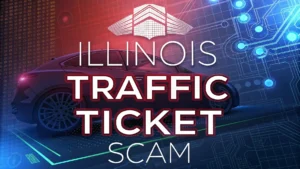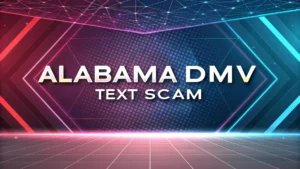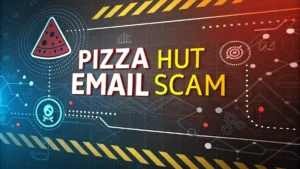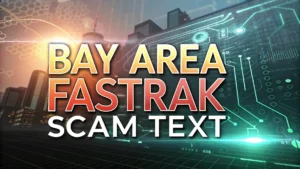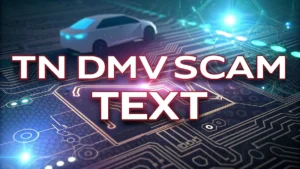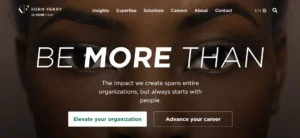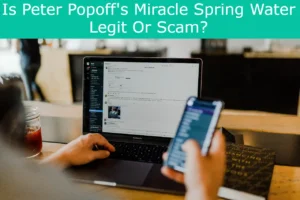Scammers are using new tactics to trick people into giving away money or personal information. One of the latest schemes involves fake text messages that look like they come from the Texas DMV.
These texts claim you owe unpaid toll fees and urge you to pay quickly to avoid penalties. Many residents across Texas have reported receiving these suspicious messages, and officials have issued warnings about this growing problem.
This blog post will help you understand how the scam works, how to spot fake messages, and what steps to take if you receive one.
Key Takeaways
- The Texas DMV text scam tricks users into paying fake toll bills through urgent text messages.
- These messages often include links or phone numbers that lead to phishing sites or scammers.
- Real DMV communications usually come via mail or verified email, not random texts.
- Never click unknown links or share personal details unless you confirm the source.
- Report any suspicious messages to local authorities or the Texas DMV directly.
What Is the Texas DMV Text Scam?
The Texas DMV text scam is a type of smishing, which stands for SMS phishing. In this scheme, fraudsters send fake text messages pretending to be from the Texas Department of Motor Vehicles. They claim the recipient has unpaid toll fees or overdue payments and threaten consequences like fines or vehicle registration suspension. These texts often include a link or a phone number to contact, pushing victims to act fast without thinking.
This scam targets drivers who use toll roads in Texas, especially those with TxTag accounts. Scammers hope people will panic and click on harmful links or give away sensitive details like credit card numbers or driver’s license info. While the messages may appear official, they are not from the real DMV. It is important to stay alert and double-check any message that asks for immediate action.
Texas officials have warned residents about this scam and urged them to report any suspicious texts. Understanding how it works is the first step in protecting yourself from becoming a victim.
How Does the Scam Work?
Fraudsters start by sending text messages that look like official alerts from the Texas DMV or related agencies like TxTag. These messages often say something like “Unpaid toll detected” or “Late fee due.” Some even mention vehicle registration problems if you don’t pay right away. The goal is to create fear and urgency so you act without checking the facts.
When you click on the link in the message, you might land on a fake website designed to collect your personal data. These pages mimic real DMV or toll service portals and ask for things like your name, driver’s license number, or credit card details. In other cases, the link may install malware on your phone or steal login credentials. If you call the number listed in the text, a scammer might try to trick you into sharing sensitive information over the phone.
These tactics are meant to make you believe the message is real. However, the real Texas DMV does not use unsolicited texts to request payments or personal details. Always verify the source before taking any action.
What Do the Fake Messages Look Like?
Fake DMV text messages often use urgent language and official-sounding words to scare people into acting fast. Some common examples include:
- “You have an unpaid toll fee. Pay now to avoid registration suspension.”
- “Action required: Your TxTag account is flagged for late payment.”
- “Your vehicle has missed three tolls. Visit [fake-link] to resolve.”
These messages may also include a sender ID that looks like it comes from the DMV, such as “TxDMV” or “TxDOT.” Some even use emojis like ⚠️ or 🛑 to catch your attention. The links provided are made to look like real DMV websites but lead to phishing pages instead.
Another red flag is poor grammar or spelling mistakes in the message. Real government agencies carefully review their communications for errors. If you notice strange formatting, odd capitalization, or unprofessional language, it is likely a scam.
Always remember: the real Texas DMV will not ask for immediate payment through text. If you’re unsure, visit the official DMV website or call their office directly to check for any real notices.
Why Are People Falling for This Scam?
Many people fall for the Texas DMV text scam because the messages feel urgent and official. Scammers know that most drivers use toll roads and worry about missing payments. When someone receives a text saying they owe money or risk losing their registration, they may panic and respond without thinking.
Also, the messages are designed to look real. They use logos, brand names like TxTag, and urgent language to trick users into clicking links or calling fake numbers. Some people assume that if the message includes their name or car details, it must be true. But scammers can easily gather basic information online or guess common names.
Another reason people get fooled is the rise of mobile banking and digital payments. People are used to getting alerts and making quick payments through apps, so a text asking for instant action feels normal. But real DMV alerts never come out of the blue. They always arrive through official channels like mail or verified emails.
Being aware of these tactics helps reduce the chance of being scammed. Always pause, check the source, and avoid clicking anything until you are sure it’s safe.
How to Spot a Fake DMV Text Message
Knowing how to identify a fake DMV text is key to avoiding scams. First, look at the sender’s phone number. Official messages from the Texas DMV usually come from verified sources or official email addresses. If the number looks random or doesn’t match known DMV contact info, it is likely fake.
Next, read the message carefully. Scammers often use urgent language like “Pay now” or “Registration suspended” to push you into acting fast. Real DMV notices give clear instructions and provide multiple ways to respond, such as visiting a website or calling an official number.
Check for spelling or grammar mistakes. Government agencies proofread their messages, so typos or awkward phrasing are big red flags. Also, hover over any links (if possible) to see where they really go. If the URL looks off or doesn’t match the official DMV site, do not click it.
Lastly, ask yourself if you were expecting this message. If you haven’t driven on a toll road recently or paid all your fees, the message might not be real. When in doubt, contact the Texas DMV directly through official channels before taking any action.
Steps to Take If You Receive a Suspicious Message
If you get a text that claims to be from the Texas DMV but seems suspicious, take these steps to stay safe. First, do not click any links or call any numbers in the message. These could lead to phishing sites or scammers waiting to steal your information.
Next, delete the message immediately to avoid accidentally clicking on anything later. Then, report the scam to the Texas DMV and local law enforcement. You can forward the message to the DMV’s official contact team or file a complaint with the Federal Trade Commission (FTC).
If you already clicked a link or shared personal details, act fast. Change your passwords, especially for any accounts related to driving records or financial services. Monitor your bank statements for unusual activity and consider placing a fraud alert on your credit report.
You should also inform friends or family who might receive similar messages. Sharing what you’ve learned helps others avoid falling for the same scam.
Finally, stay calm and learn from the experience. Scammers rely on fear and urgency to trick people. By knowing the signs and reporting threats, you can protect yourself and others from future attacks.
How to Protect Yourself from Future Scams
Staying safe from DMV-related scams starts with good digital habits. First, always verify the source of any unexpected message. If you get a text claiming to be from the DMV, do not click links or call numbers in the message. Instead, visit the official Texas DMV website or call their office directly to check for real notices.
Second, enable two-factor authentication (2FA) on your online accounts. This adds an extra layer of security beyond just a password. Even if a scammer gets your login info, they won’t be able to access your account without the second code sent to your phone or email.
Third, use updated antivirus software on your phone and computer. Good security tools can block phishing attempts and warn you about dangerous websites. Keep your operating system and apps up to date to close any security gaps that hackers might exploit.
Fourth, educate yourself and others about common scam tactics. Share what you’ve learned about the Texas DMV text scam with friends and family. The more people know, the harder it is for scammers to succeed.
Lastly, trust your instincts. If a message feels off or too urgent, it probably is. Taking a few extra seconds to double-check can save you from serious trouble.
Official Resources to Report DMV Scams
If you receive a fake DMV text message, reporting it helps authorities track down scammers and prevent others from falling victim. Start by forwarding the message to the Texas DMV directly through their official contact page. You can also file a complaint with the Federal Trade Commission (FTC) at ftc.gov/complaint. This agency collects reports and shares them with law enforcement teams.
You can also alert the Texas Attorney General’s Office. They handle consumer fraud cases and offer a secure way to submit scam reports online. If you suspect identity theft after responding to a fake message, place a fraud alert on your credit report through major credit bureaus like Equifax, Experian, and TransUnion.
For mobile users, many phone carriers offer spam reporting features. You can mark the message as spam or forward it to 7726 (SPAM), a free service supported by most major carriers. Doing so helps improve spam filters and block future messages from the same source.
Reporting scams not only protects you but also helps build a safer digital environment for everyone. Don’t hesitate to speak up if you spot something suspicious.
Other Similar Scams to Watch Out For
While the Texas DMV text scam is widespread, it is not the only one targeting drivers. Other fake messages pretend to come from toll services like E-ZPass or TxTag. These scams also claim unpaid fees and use urgent language to pressure victims into clicking harmful links or calling fake numbers.
Another common scam involves fake insurance alerts. Fraudsters send messages saying your auto insurance policy is about to expire or needs renewal. These texts often include links to fake insurer websites that ask for personal and payment details.
Some scammers even pose as vehicle registration services. They claim you missed a deadline and need to pay a fine to keep your tags valid. These messages may include fake documents or invoices that look real but are designed to steal your information.
Taxi and ride-share scams are also rising. Fake messages say you owe money for a recent trip you didn’t take. These texts may include a receipt or invoice that looks official but leads to a phishing site.
Being aware of these tactics helps you stay alert. Always double-check unexpected messages and avoid clicking links from unknown sources.
Stay Alert and Protect Your Information
Scammers are constantly changing their methods, but awareness and caution can help you stay safe. The Texas DMV text scam is just one example of how fraudsters use urgency and fear to trick people into giving away personal data. By learning how these scams work, you can better protect yourself and your loved ones.
Remember, the real Texas DMV will never send unsolicited texts demanding immediate payment or threatening registration issues. Always verify any message through official channels before taking action. If something feels off, trust your gut and investigate further before responding.
Sharing what you’ve learned with friends and family makes your community stronger against fraud. Reporting suspicious messages to the DMV or FTC also helps authorities track down scammers and prevent future attacks.
Digital safety starts with simple steps like checking sender details, avoiding random links, and keeping your software updated. With the right knowledge and habits, you can avoid falling victim to scams and keep your personal information secure.
Frequently Asked Questions
What should I do if I received a fake DMV text?
Delete the message and report it to the Texas DMV and the FTC. Do not click any links or call the numbers provided.
Does the Texas DMV ever send text messages?
The DMV may send reminders through email or mail but does not use unsolicited texts for urgent payments or notices.
How can I tell if a DMV message is real?
Check the sender’s number, look for spelling mistakes, and verify the message through official DMV channels like their website or phone number.
Can fake DMV texts steal my identity?
Yes, if you click on links or share personal details, scammers can gain access to your sensitive information and commit identity theft.
Is there a way to block scam texts?
Most phones allow you to block numbers or report spam. You can also use third-party apps to filter unwanted messages and protect your inbox.





